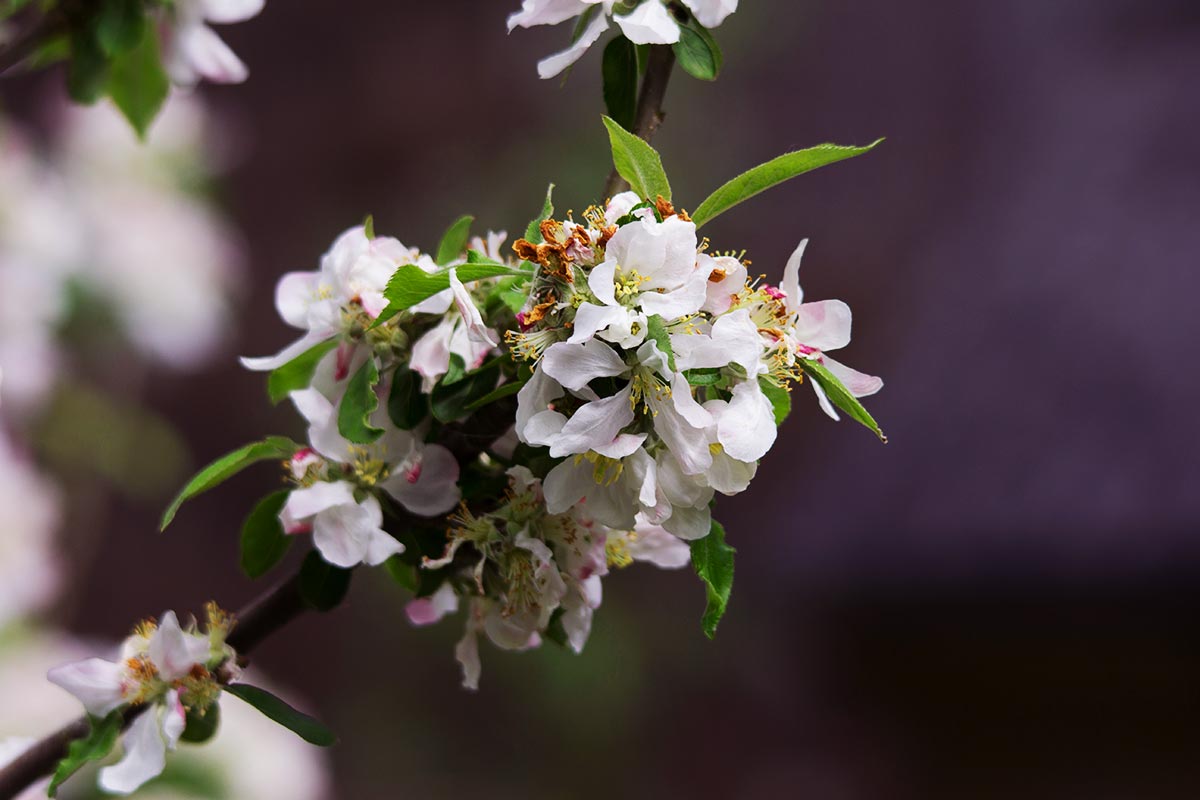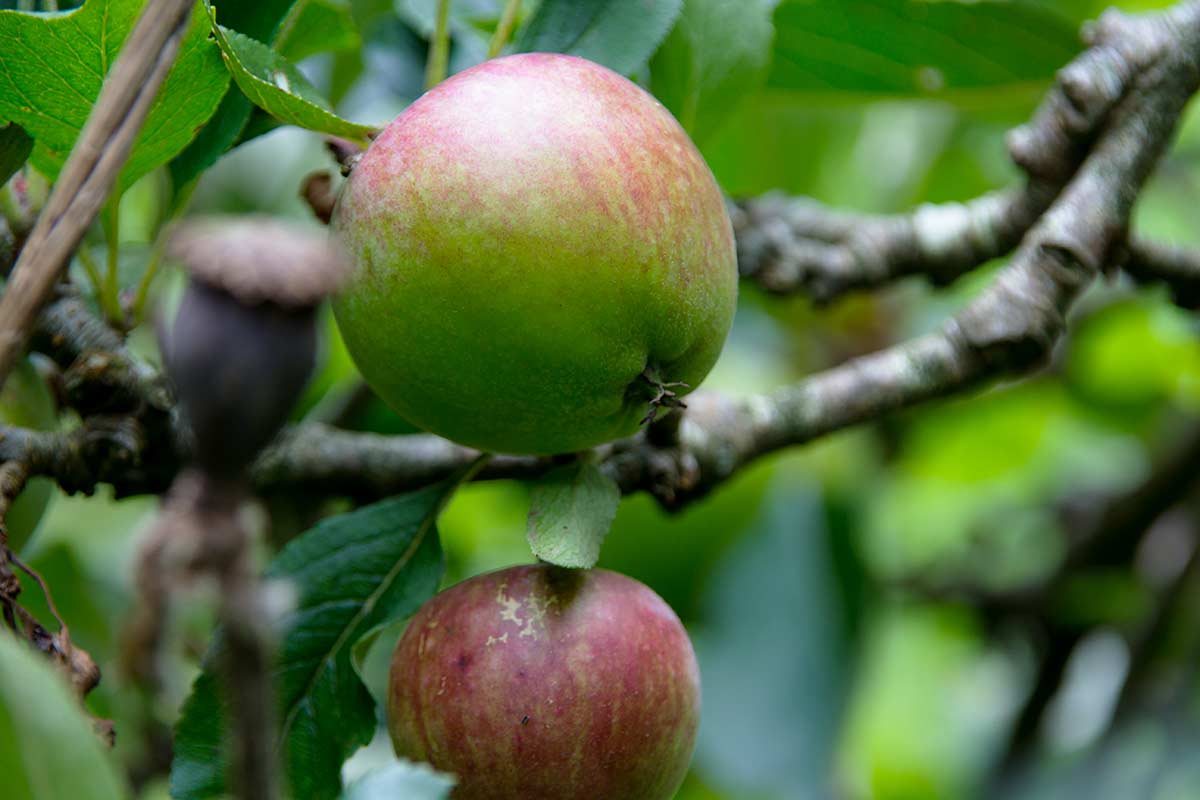Apple
Common names
Latin name
Family
Parts used
Botanical description, cultivation and harvesting
A deciduous tree of variable height (there are dwarf trees available). The fruit is white/pale pink and is a valuable source of food for bees.
History, folklore, taste and energetics
Malus is from the Latin name for an apple. Apples (particularly when lightly cooked) contain pectin which is effective at drawing out toxins (including heavy metals) from the system. The efficacy of using apple pectin to remove heavy metals has been demonstrated by its therapeutic use on the people of Chernobyl with whom it is used to draw out radioactive Caesium from the system. It can also be used to treat other heavy metal toxicity e/g/ accumulated mercury or aluminium.
The flavonoids in the fruit have been shown to protect against stroke and elevated blood pressure. Raw apple can be made into a poultice to treat inflamed eyes, badly healing wounds and aches and pains. A traditional wart remedy is to rub two halves of an apple on the wart and then bury them; they will disappear as the apple decays.
There is a Bach Flower Remedy of Crab Apple which is used for self-dislike, despondency, depression, over anxiousness, getting bogged down in detail, house-proudness and fussiness. According to Memory Paterson meditation with the apple tree (or fruit or blossom) helps bring about a communion between male and female, helping us to find love and trust. It helps us to develop love for others, but also for ourselves. It helps us to develop harmony within ourselves and therefore with the world.
Seen as an extremely important tree in Celtic culture and many other ancient cultures. Several cultures have legends about Paradise being an apple orchard and the apple being the tree of knowledge or of wisdom. Apples are also connected with love. In Ireland the silver bough was cut from an apple tree; nine apples hung upon the branch and played continuous music that lulled people into a trance. The silver bough was seen as a link with the unseen world.
Ripe apples are generally cool, moist and sweet in nature whilst unripe, wild and cooking varieties- are cool, moist and sour.
Constituents
Sugars, Acids, Pectin, Vitamin A,B1,C, Minerals.
Actions
Fruit;
- Tonic for the digestive and liver
- Stimulant
- Diuretic
- Anti-rheumatic
- Laxative
- Antiseptic
Leaves and bark;
- Cooling
- Astringent
Traditional and current uses
- Used to treat constipation and diarrhoea
- Lowers cholesterol and reduces high blood pressure
- Sour apples as diuretic in urinary infections
- Source of minerals and vitamins in anaemia and debility
- Infusion of raw fruit used for rheumatic pains and colic
- Juice and infusion a cooling remedy for fevers
- Stewed fruit for gastroenteritis, tummy bugs
- Stewed fruit to soothe bowel in food intolerance and IBS
- Poultice for skin infections such as scabies
- Stewed fruit for diarrhoea and dysentery. Also for ulcerative colitis and gastric ulcers
- Bronchial problems, hoarseness and coughs
- Mental and physical over exertion
- The peel is used in France to treat rheumatism, gout and urinary disorders.
- Raw grated apple taken first thing in the morning will quell morning sickness.
- Apples eaten last thing at night will help with insomnia and will also help with bowel problems.
- Stewed apple can be eaten before meals to soothe the digestive tract for those with inflammation or with food intolerances. If an irritant food is inadvertently taken a fast on stewed apple will heal the bowel.
Recipes
Intestinal Corrective Powders
2 parts Slippery elm powder
2 parts Marshmallow root powder
1 part Green clay
1 part Psyllium powder
2 parts apple pectin
1 part powdered fennel seed or cardamom pods
Mix powders thoroughly. Take 1-2 teaspoons stirred into a small glass of water or apple juice in the evening and follow with 500ml water or herb tea. Acts as a pre-biotic for healthy gut flora, cleanses toxins from the bowel, provides bulk for the stools in both constipation and diarrhoea, soothes inflammation in the gut wall. Basically, it corrects gut function and is an effective bowel cleanse. It can be taken once a week to balance the guts, used for a few days in a row to correct stool consistency, used if there has been an infection, if antibiotics have been used or to soothe the bowel if one inadvertently eats a food that does not suit.
A simpler version is to stew dessert apples (eating apples rather than cooking apples), or pears, and add some cinnamon. Eat at the beginning of the meal rather than at the end.


